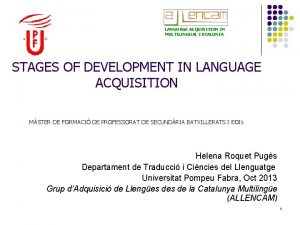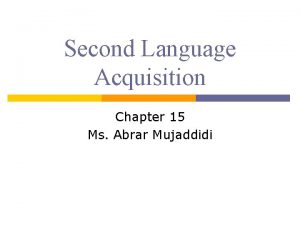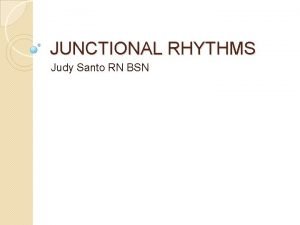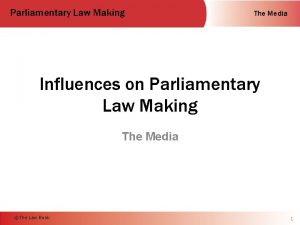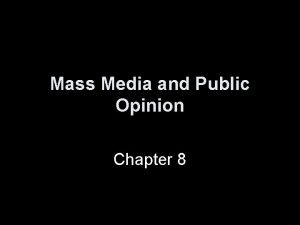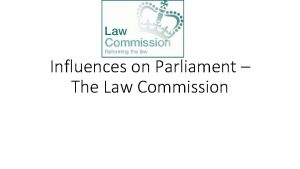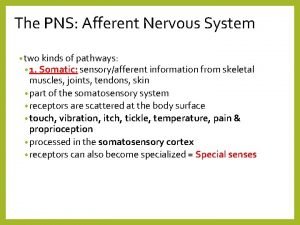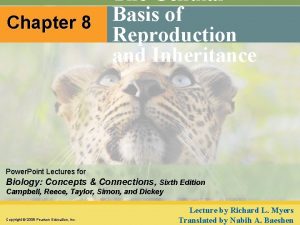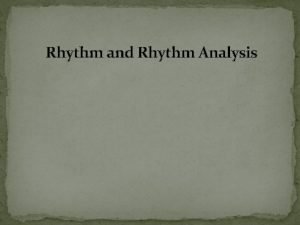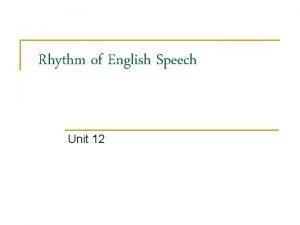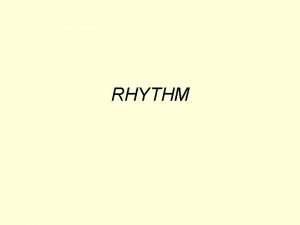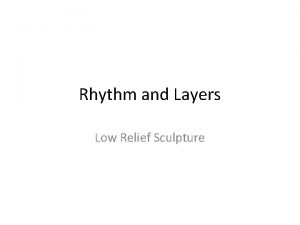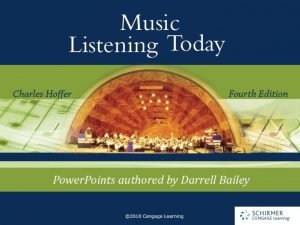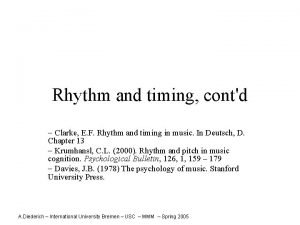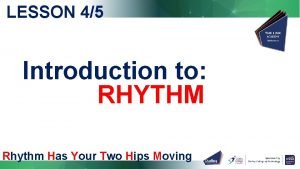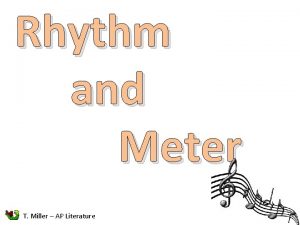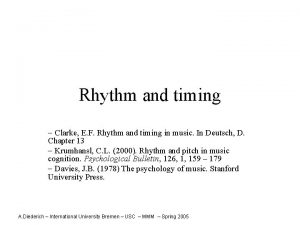How does first language influence second language rhythm

















- Slides: 17

How does first language influence second language rhythm? Laurence White and Sven Mattys Experimental Psychology Bristol University

Overview • Background: Ø Speech rhythm and “rhythm classes”. Ø New speech rhythm metrics. • Speech production study: Ø Do new rhythm metrics serve to illustrate the influence of first language on second language rhythm?

Background: Rhythm • Rhythm (music, speech, etc. ) arises from the repetition of related sounds. • In English speech, rhythm arises from repetition of stressed syllables. I did not have sexual relations with that woman – Miss Lewinsky. • In Spanish, there is much less contrast between stressed and unstressed syllables. A pocos pasos de mi casa está una tienda bonita. • Traditional distinction: Ø Syllable-timed languages (e. g. Romance). Ø Stress-timed languages (e. g. Germanic).

Stress-timing vs syllable-timing • Stress-timed languages: isochrony? sleep. ing. soundly vs sleep. il. y. re. searches • Stress-timing is alternation rather than regularity: Ø Greater differences between stressed and unstressed syllables… including: ØVowel reduction. ØMore complex consonant clusters, particularly in stressed syllable onsets and codas. e. g. (s)(t)(r)a(n)(d)(s) ØFewer open syllables.

Basis of rhythmic analysis • Separate signal into vocalic and intervocalic sections the standards committee and examine variations in length of each.

New rhythm metrics • Variance-based metrics (Ramus, Nespor & Mehler, 1999): Ø ΔV: standard deviation of vocalic intervals. Ø ΔC: standard deviation of intervocalic intervals. Ø %V: vocalic proportion of total utterance. • Also examined PVI metrics (Low, Grabe & Nolan, 2000; Grabe & Low, 2002). Ramus, Nespor & Mehler (1999)

Overview • Background: Ø Speech rhythm and “rhythm classes”. Ø New speech rhythm metrics. • Speech production study: Ø Do new rhythm metrics serve to illustrate the influence of first language on second language rhythm?

Second language recordings • Comparison between “rhythm classes”: Ø Spanish (“syllable-timed”) vs English (“stress-timed”). Native language Language spoken Spanish Sp. Sp Sp. English Eng. Sp English • Six speakers per condition. • Five sentences per language. • Other materials also recorded for most speakers: Ø Map task to elicit non-read speech.

Spanish & English L 1/L 2 results: Variance-based metrics Key Lang. spoken Native lang. Speech rate (syls/sec) Eng. Sp 4. 8 Sp. Sp 8. 0 Eng 5. 2 Sp. Eng 6. 6

All speakers: Effect of speech rate on ΔV • Varco. V – ΔV normalised for speech rate: ΔV / Mean V (Dellwo & Wagner, 2003)

Spanish & English L 1/L 2 results: Rate normalised ΔV and %V Key Eng Lang. spoken Native lang. Eng. Sp Sp. Eng Sp. Sp

Spanish L 1/L 2: %V differences continued… • A mí no me gustaba su coche pequeño y viejo. Sp Sp. Eng Vowel duration (ms) 40, 41 vs 27, 24 Vowel duration (ms) 65, 67 vs 67, 66 47, 32 vs 71, 56

Second language recordings • What is the effect of speaking a second language, when languages are rhythmically similar? • Comparison within “rhythm classes”: Ø Dutch (“stress-timed”) vs English (“stress-timed”). Native language Language spoken Dutch English Dutch Dut. English Eng. Dut Eng • Six speakers per condition. • Five sentences per language.

Cross-linguistic results: Dutch vs English Key Lang. spoken Native lang. Dut. Eng Dut Eng. Sp Sp. Eng Sp. Sp

First and second language rhythm: summary • Influence of L 1 on L 2: Ø Consonantal metrics show little influence of L 1. Ø Vocalic metrics: ØNormalisation for speech rate necessary (Varco. V). ØClearly show influence of L 1 on L 2. ØBut… ØNot necessarily intermediate between L 1 and L 2. ØLittle accommodation to L 2 when languages are rhythmically similar.

Interpretation of rhythm metrics • Rhythmic distinctions can be seen as arising from specific segmental and prosodic processes: Ø Rhythm as emergent property rather than product of top-down timing control. • Variation within “rhythm classes” sometimes as large as between. Ø Suggests distinction is not simply bimodal. • Further research: How do rhythm metrics relate to the subjective experience of linguistic rhythm?

Credits Biotechnology and Biological Sciences Research Council, U. K. Juan Toro, Barcelona. Elizabeth Johnson, Nijmegen. Eric-Jan Wagenmakers & Atie Vogelenzang de Jong, Amsterdam. Ineke Mennen, Edinburgh. Reinier Salverda, London.
 Difference of first language and second language
Difference of first language and second language Language
Language Neurological considerations in language acquisition
Neurological considerations in language acquisition 27 miles per gallon into kilometers per liter
27 miles per gallon into kilometers per liter Learning vs acquisition
Learning vs acquisition Difference between second language and foreign language
Difference between second language and foreign language Causes of junctional rhythm
Causes of junctional rhythm How does the media influence parliamentary law making
How does the media influence parliamentary law making Influences on parliamentary law making
Influences on parliamentary law making Frozen jews
Frozen jews Chapter 14 principles of hair design review questions
Chapter 14 principles of hair design review questions How does the media influence public opinion?
How does the media influence public opinion? How does the law commission influence parliament
How does the law commission influence parliament Essay first second third
Essay first second third Cutaneous mechanoreceptors
Cutaneous mechanoreceptors Stahl
Stahl First base second base third base meaning
First base second base third base meaning Wave
Wave
